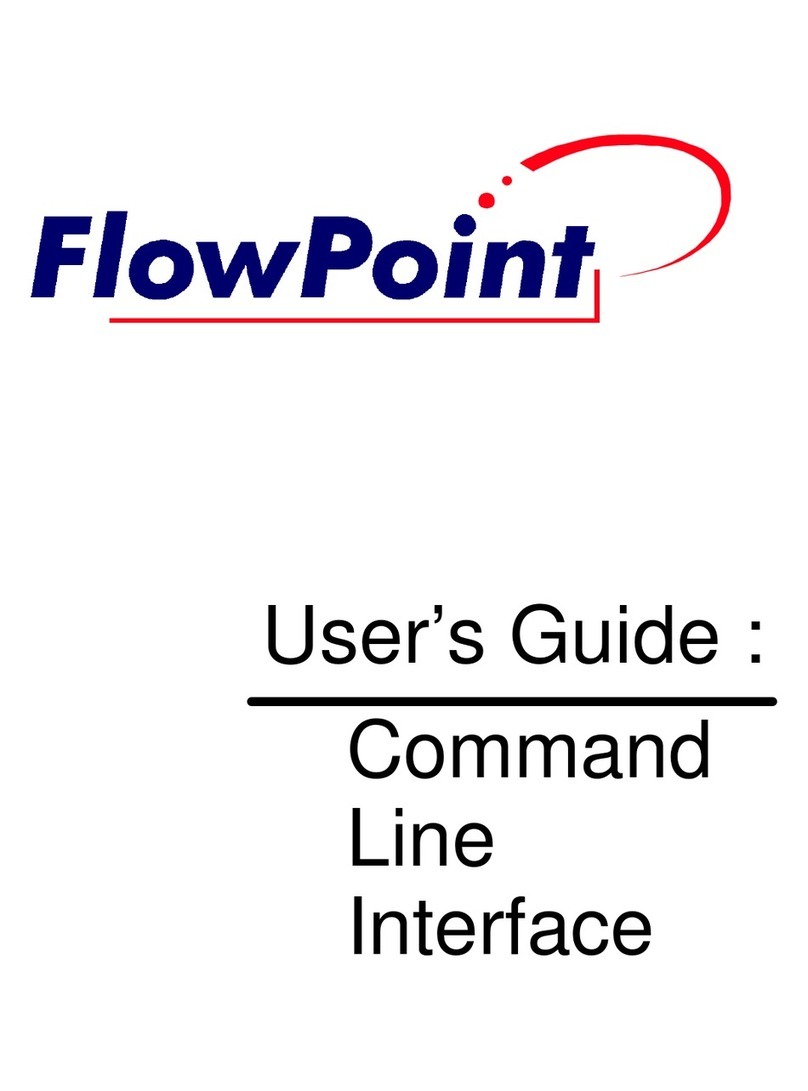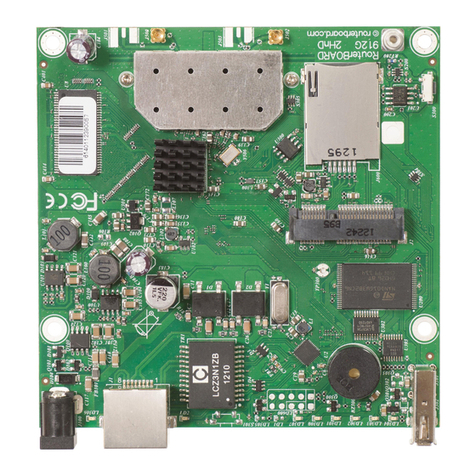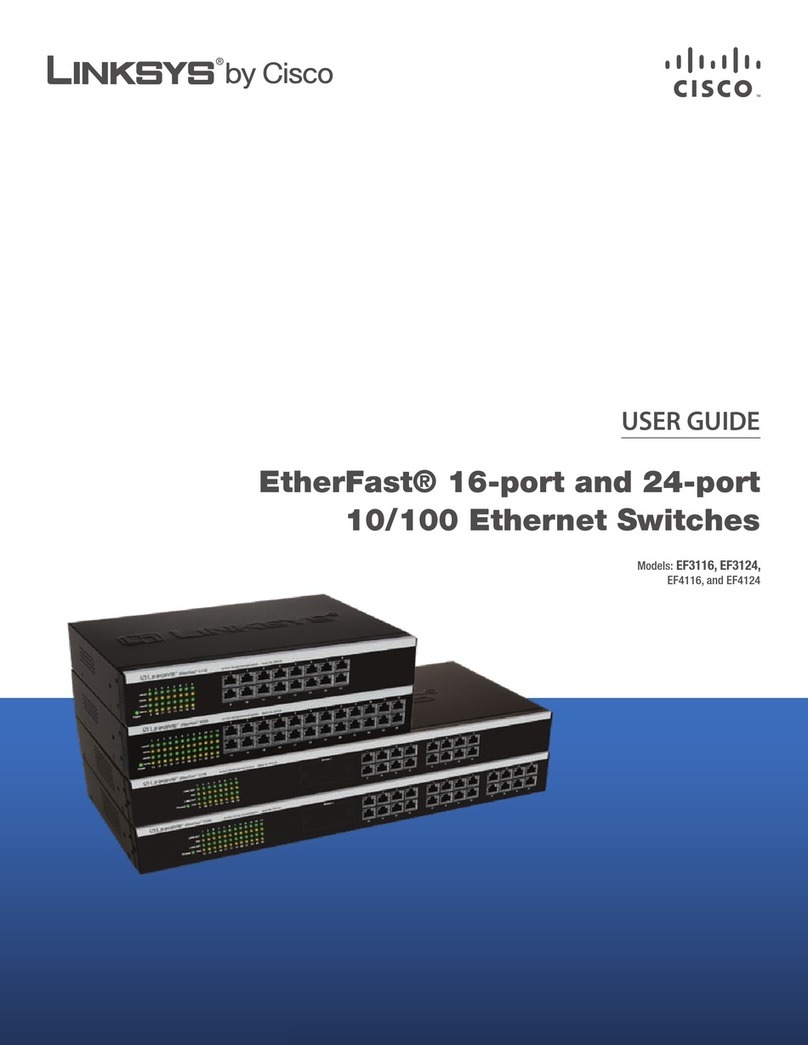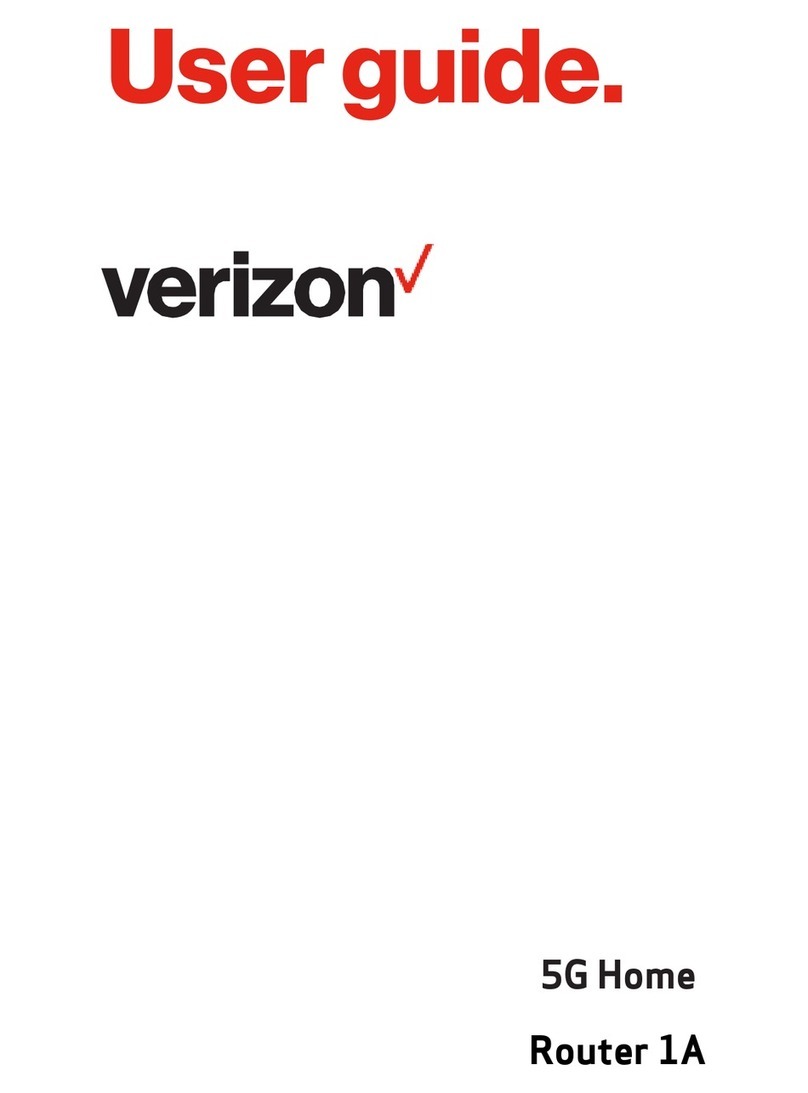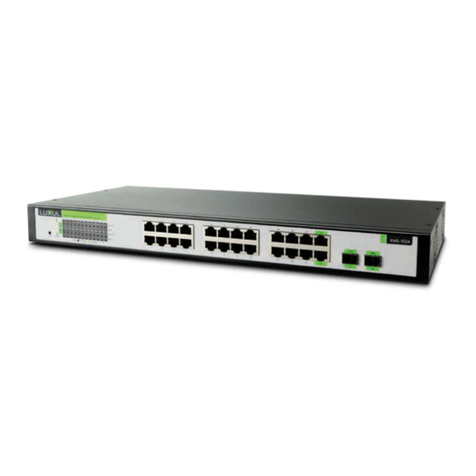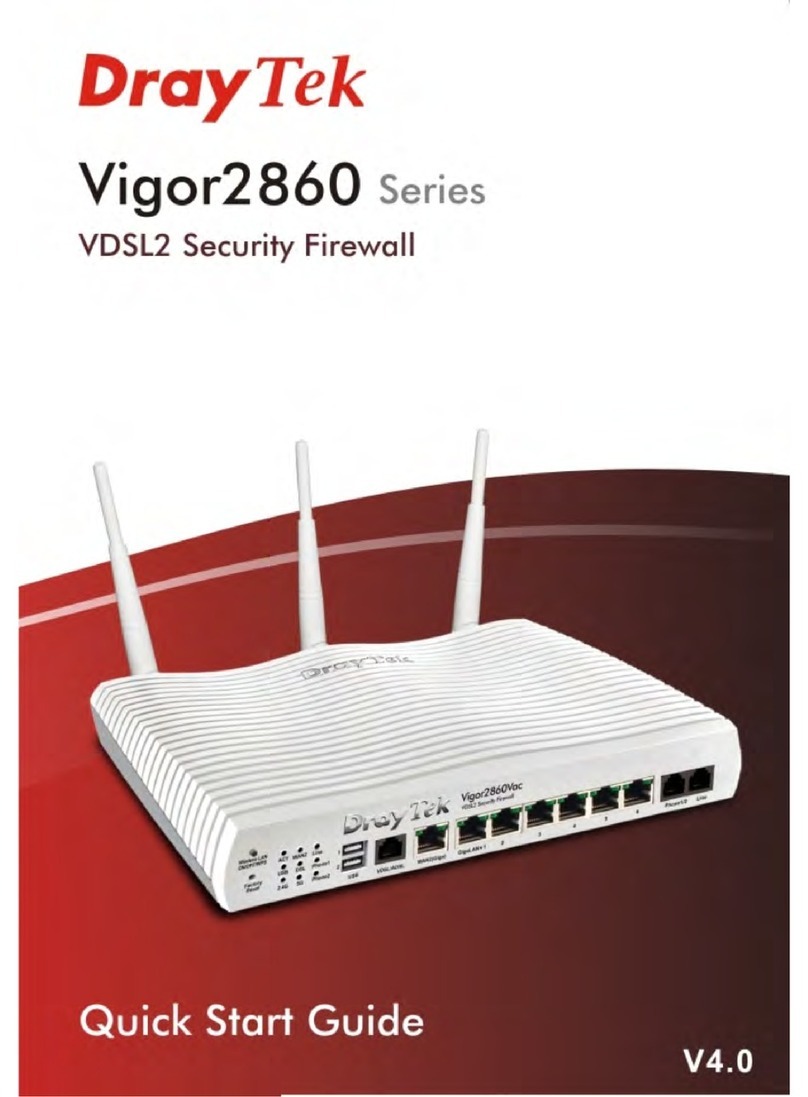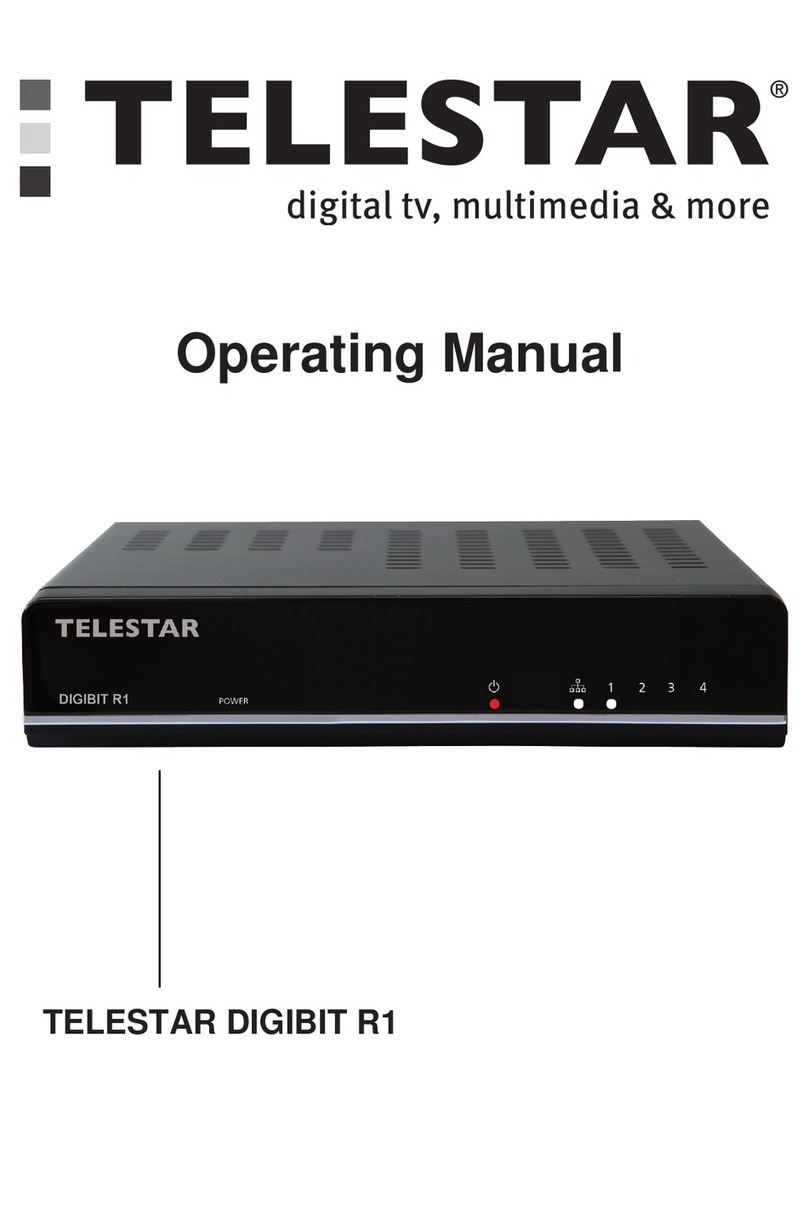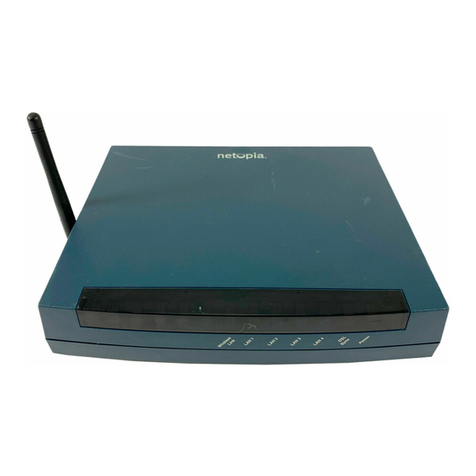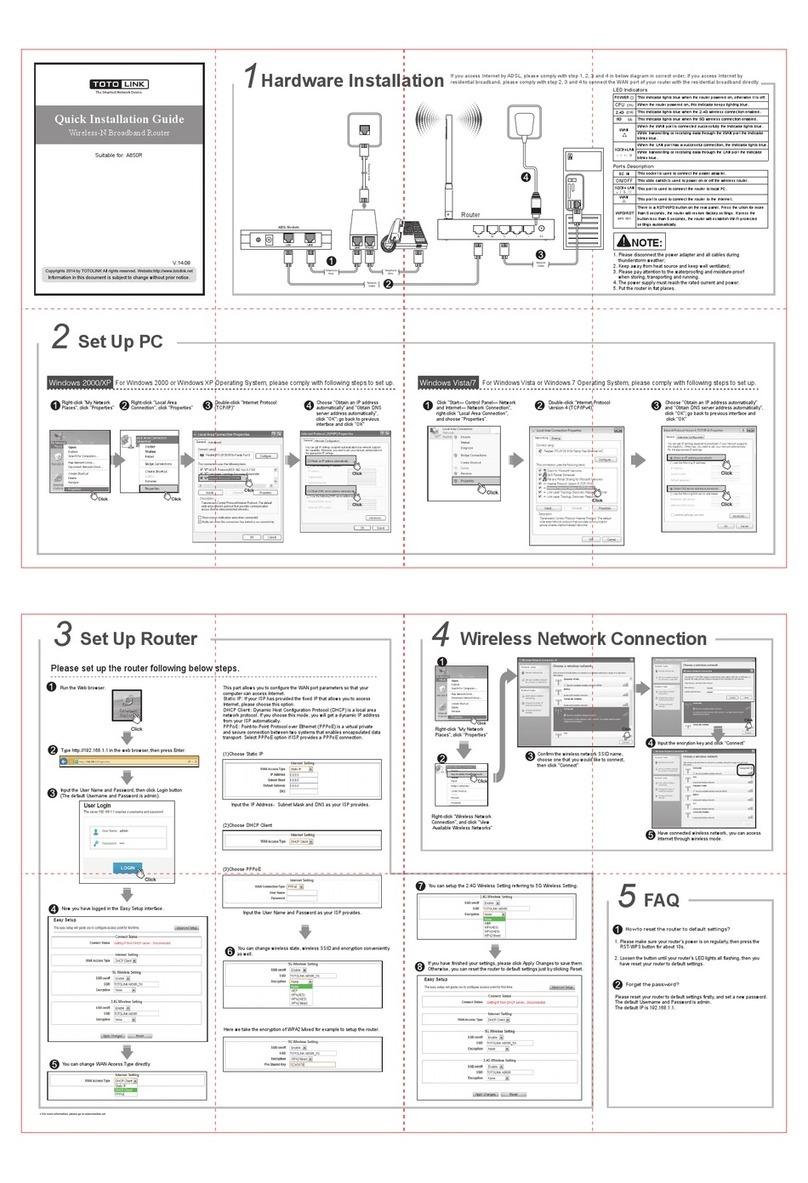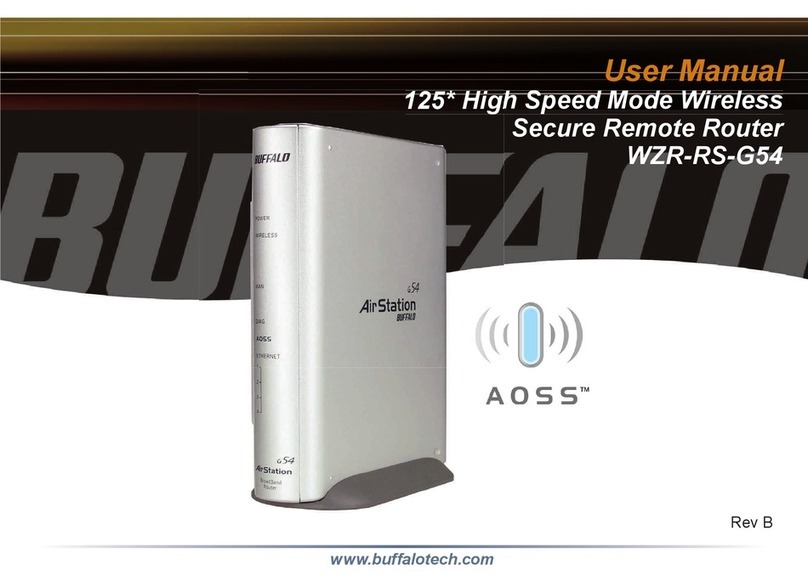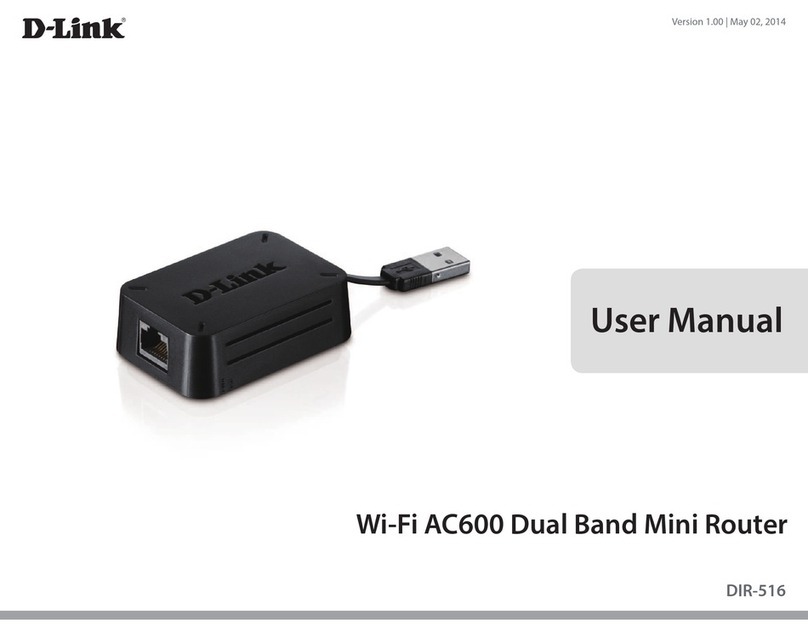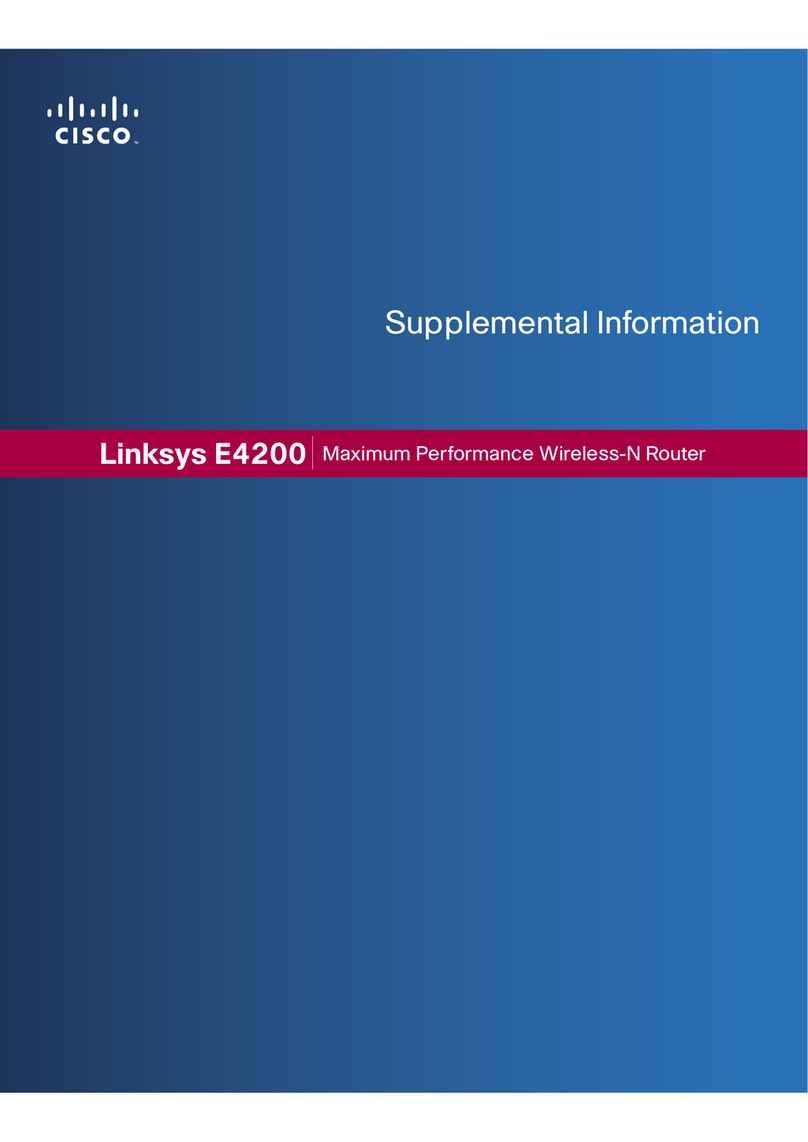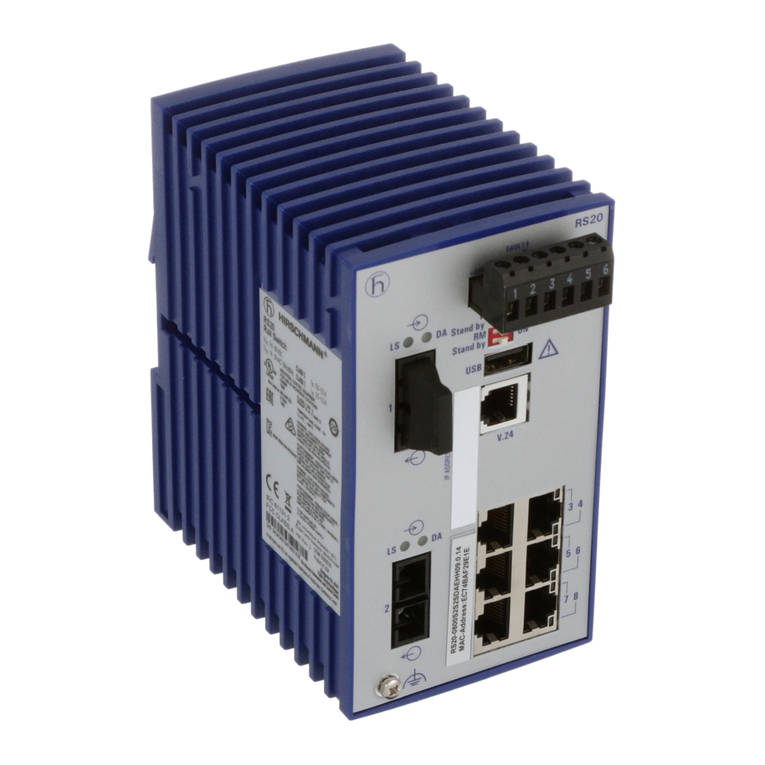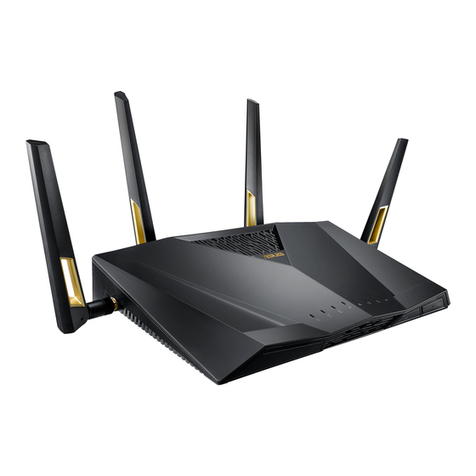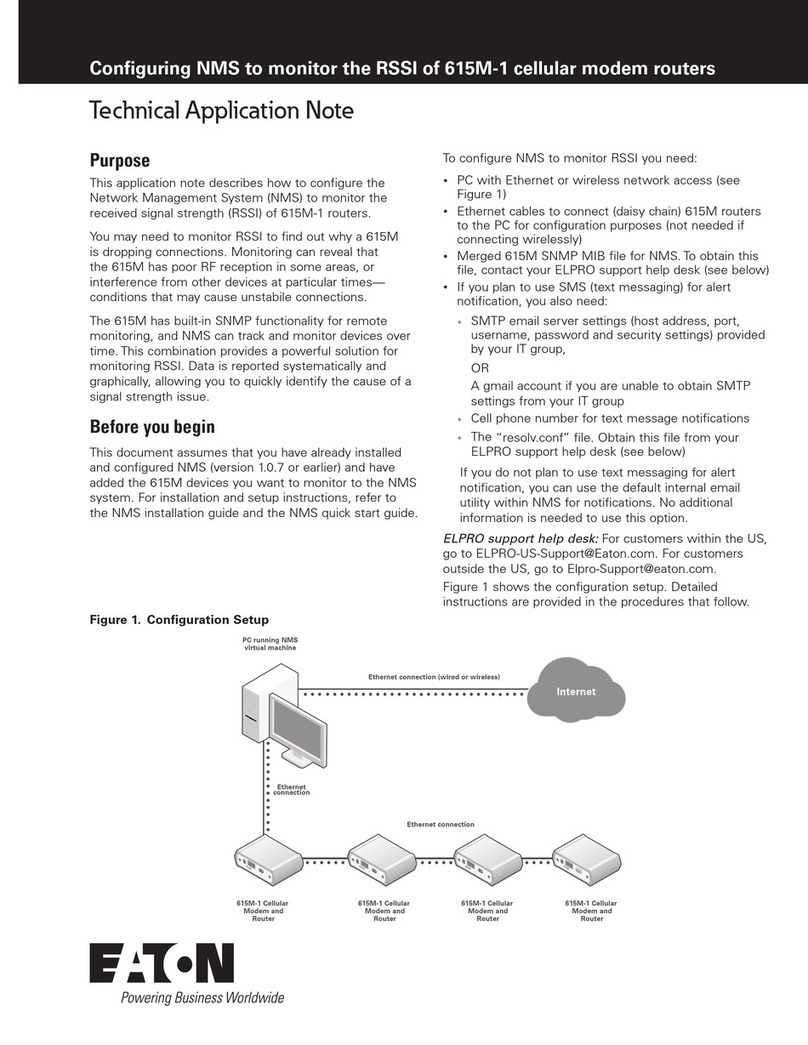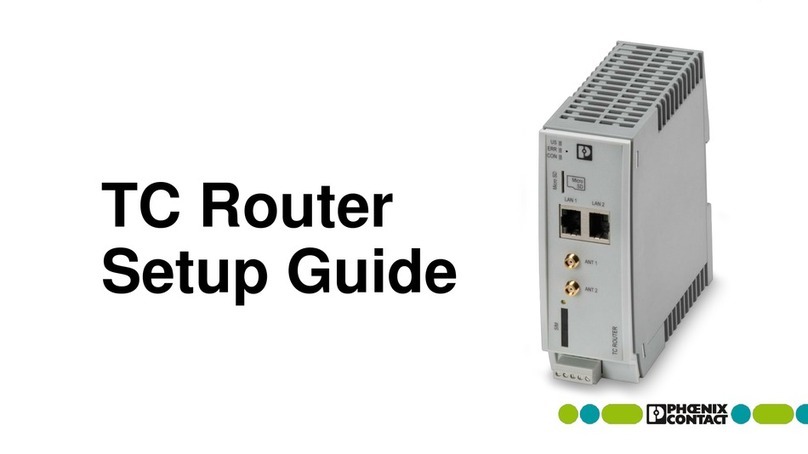FlowPoint 100 User manual

FlowPoint 100/128
ISDN/IDSL Router
USER
GUIDE

FlowPoint 100/128
ii
Third Edition (August, 1997)
Copyright
FlowPoint provides this publication “as is” without warranty of any kind,
either expressed or implied, including, but not limited to, the implied
warranties of merchantability or fitness for a particular purpose.
All rights reserved. No part of this book may be reproduced in any form or by
any means without written permission from FlowPoint.
Changes are periodically made to the information in this book. They will be
incorporated in subsequent editions. FlowPoint may make improvements
and/or changes in the product described in this publication at any time.
© Copyright 1995, 1996, 1997 FlowPoint Corporation
Trademarks
FlowPoint is a trademark of FlowPoint Corporation.
All other trademarks and registered trademarks mentioned in this manual are
the sole property of their respective companies.
180 Knowles Drive, Suite 100
Los Gatos, California 95030
Telephone: (408) 364-8300
Fax: (408) 364-8301
Internet: [email protected]
Part Number 222-00165-01

FlowPoint 100/128 iii
Software License Agreement and Warranties
License Agreement
This product contains certain Software (computer programs, firmware and media) the
use of which are subject to this license agreement. If you do not agree with all the
terms, you must return this product, all manuals and documentation, and proof of
payments, to the place you obtained them for a full refund within 30 days of first
acquiring this product. Your written approval is not prerequisite to the validity or
enforceability of this agreement and no solicitation of any such written approval by or
on behalf of FlowPoint shall be construed as an inference to the contrary.
License and Term
FlowPoint and any applicable sublicensors grant to you a non-exclusive, non-
transferable license to use the FlowPoint software programs and related
documentation in this package (collectively referred to as the “Software”) on one
licensed router. If the FlowPoint product that you acquired is an upgrade, then the
terms and conditions of this agreement apply equally to the upgraded product. Any
attempted sublicense, assignment, rental, sale or other transfer of the Software or the
rights or obligations of this Agreement without the prior written consent of FlowPoint
shall be null and void. You agree not to export or re-export this product without prior
authorization from the U.S. and other applicable government authorities. This
License will automatically terminate without notice to you if you fail to comply with
its terms. This Agreement will be covered by the laws of the State of California.
The Software and documentation are copyrighted. You may make copies of the
Software only for backup and archival purposes. Unauthorized copying, reverse
engineering, decompiling, disassembling, and creating derivative works based on the
Software are prohibited. Title to the Software is not transferred to you by this license.
Ownership and title to the Software and to the actual contents of this package,
including the copy of the Software and the media on which it is stored and the
associated documentation, are retained by FlowPoint and/or its licensors.
U.S. Government End Users. The [Licensed Product] is a “commercial item,” as that
term is defined at 48 C.F.R. 2.101 (OCT 1995), consisting of “commercial computer
software” and “commercial computer software documentation,” as such terms are
used in 48 C.F.R. 12.212 (SEPT 1995) and is provided to the U.S. Government only
as a commercial end item. Consistent with 48 C.F.R. 12.212 and 48 C.F.R.
227.7202-1 through 227.7202-4 (JUNE 1995), all U.S. Government End Users
acquire the [Licensed Product] with only those rights set forth herein.
Limited Warranty on Media and Damages Disclaimer
FlowPoint or its distributors or resellers will repair or replace free of charge any
defective recording medium on which the Software is recorded if the medium is
returned to FlowPoint or its distributor or reseller within ninety (90) days after the
purchase of License for the Software. This warranty does NOT cover defects due to
accident, or abuse occurring after your receipt of the Software. THIS WARRANTY
GIVES YOU SPECIFIC LEGAL RIGHTS AND YOU MAY ALSO HAVE OTHER
RIGHTS WHICH MAY VARY FROM STATE TO STATE.

FlowPoint 100/128
iv
Limited Warranty on Hardware
FlowPoint warrants that Products delivered hereunder shall be free from defects in
materials and workmanship for a period of one (1) year from the date of purchase.
The liability of FlowPoint is limited to replacing or repairing, at Manufacturer’s
option, any defective Products that are returned F.O.B. Manufacturer’s factory,
California. In no case are Products to be returned without first obtaining permission
and a customer return material authorization number from Manufacturer.
THIS WARRANTY DOES NOT APPLY TO DEFECTS DUE DIRECTLY OR INDIRECTLY TO
MISUSE, ABUSE, NEGLIGENCE, ACCIDENT, REPAIRS, OR ALTERATIONS MADE BY
THE CUSTOMER OR ANOTHER PARTY OR IF THE FLOWPOINT SERIAL NUMBER HAS
BEEN REMOVED OR DEFACED. THIS WARRANTY GIVES YOU SPECIFIC LEGAL
RIGHTS AND YOU MAY ALSO HAVE OTHER RIGHTS WHICH MAY VARY FROM STATE
TO STATE.
EXCEPT FOR THE WARRANTY SET FORTH HEREIN, MANUFACTURER DISCLAIMS
ALL WARRANTIES WITH REGARD TO THE PRODUCTS, INCLUDING ALL IMPLIED
WARRANTIES OF MERCHANTIBILITY AND FITNESS FOR A PARTICULAR PURPOSE.
Hardware and Software Limitations
FlowPoint does not warrant that the Software will be free from error or will meet your
specific requirements. You assume complete responsibility for decisions made or
actions taken based on information obtained using the Software. Any statements
made concerning the utility of the Software are not to be construed as unexpressed or
implied warranties.
FLOWPOINT SHALL NOT BE RESPONSIBLE OR LIABLE WITH RESPECT TO ANY
SUBJECT MATTER OF THIS SOFTWARE LICENSE AGREEMENT, THE HARDWARE, OR
THE AGREEMENTS OF WHICH THEY ARE A PART OR ANY MEDIA ATTACHMENT,
PRODUCT ORDER, SCHEDULE OR TERMS OR CONDITIONS RELATED THERETO
UNDER ANY CONTRACT, NEGLIGENCE, STRICT LIABILITY, OR OTHER THEORY: A)
FOR LOSS OR INACCURACY OF DATA OR (EXCEPT FOR RETURN OF AMOUNTS PAID
TO FLOWPOINT THEREFORE), COST OF PROCUREMENT OF SUBSTITUTE GOODS,
SERVICES, OR TECHNOLOGY, B) FOR ANY INDIRECT, INCIDENTAL OR
CONSEQUENTIAL DAMAGES INCLUDING BUT NOT LIMITED TO LOSS OF REVENUES
AND LOSS OF PROFITS; HOWEVER CAUSED, WHETHER FOR BREACH OF WARRANTY,
BREACH OF CONTRACT, REPUDIATION OF CONTRACT, NEGLIGENCE OR
OTHERWISE.
NEITHER FLOWPOINT NOR ANY OF ITS REPRESENTATIVES, DISTRIBUTORS OR
OTHER RESELLERS MAKES OR PASSES ON ANY WARRANTY OR REPRESENTATION
ON BEHALF OF FLOWPOINT’S THIRD PARTY SUPPLIERS.
Post Warranty Services
Contact FlowPoint for information regarding post-warranty hardware and software
services.
Federal Communications Commission (FCC)
Part 15 CLASS B Statement
Section 15.105(b) of the Code of Federal Regulations
NOTE: This equipment has been tested and found to comply with the limits for a
Class B digital device, pursuant of Part 15 of the FCC Rules. These limits are
designed to provide reasonable protection against harmful interference in a residential

FlowPoint 100/128 v
installation. This equipment generates, uses, and can radiate radio frequency energy
and, if not installed and used in accordance with the instructions, may cause harmful
interference to radio communications. However, there is no guarantee that
interference will not occur in a particular installation. If this equipment does cause
harmful interference to radio or television reception, which can be determined by
turning the equipment off and on, the user is encouraged to try to correct the
interference by one or more of the following measures:
·Reorient or relocate the receiving antenna.
·Increase the separation between the equipment and receiver.
·Connect the equipment into an outlet on a circuit different from that to which the
receiver is connected.
·Consult the dealer or an experienced radio/TV technician for help.
CAUTION: Any changes or modifications not expressly approved by the party
responsible for this device could void the user’s authority to operate this
equipment.
Part 68 Statement
•This equipment complies with Part 68 of the FCC rules. On the back of this
equipment is a label that contains, among other information, the FCC registration
number for this equipment. If requested, this information must be provided to the
telephone company.
•This equipment has the FCC Digital Interface Code of 02IS5. The FCC Service
Order Code is 6.OY.
•The USOC jack for this equipment is RJ49C.
•An FCC compliant telephone cord and modular plug is provided with this
equipment. This equipment is designed to be connected to the telephone network
or premises wiring using a compatible modular jack which is Part 68 compliant.
•This equipment cannot be used on telephone company-provided coin service.
Connection to Party Line Service is subject to state tariffs.
•If this equipment causes harm to the telephone network, the telephone company
will notify you in advance that temporary discontinuance of service may be
required. If advanced notice is not practical, the telephone company will notify
the customer as soon as possible. Also, you will be advised of your right to file a
complaint with the FCC if you believe it is necessary.
•The telephone company may make changes in its facilities , equipment,
operations, or procedures that could affect the operation of the equipment. If this
happens, the telephone company will provide advanced notice in order for you to
make the necessary modifications in order to maintain uninterrupted service.
•If trouble is experienced with this equipment, please contact FlowPoint
Corporation for warranty information. If the trouble is causing harm to the

FlowPoint 100/128
vi
telephone network, the telephone company may request you remove the
equipment from the network until the problem is resolved.
•No repairs can be done by the customer.
•It is recommended that the customer install an AC surge arrestor in the AC outlet
to which this device is connected. This is to avoid damaging the equipment
caused by local lightning strikes and other electrical surges.
Industry Canada
CS03 Statement
NOTICE: The Industry Canada label identifies certified equipment. This
certification means that the equipment meets certain telecommunications network
protective, operational and safety requirements as prescribed in the appropriate
Terminal Equipment Technical Requirements document (s). The Department does not
guarantee the equipment will operate to the user’s satisfaction.
Before installing this equipment, users should ensure that it is permissible to be
connected to the facilities of the local telecommunications company. The equipment
must also be installed using an acceptable method of connection. The customer should
be aware that compliance with the above conditions may not prevent degradation of
service in some situations.
Repairs to certified equipment should be coordinated by a representative designated
by the supplier. Any repairs or alterations made by the user to this equipment, or
equipment malfunctions, may give the telecommunications company cause to request
the user to disconnect the equipment.
User should ensure for their own protection that the electrical ground connections of
the power utility, telephone lines and internal metallic water pipe system, if present,
are connected together. This precaution may be particularly important in rural areas.
CAUTION: Users should not attempt to make such connections themselves, but
should contact the appropriate electric inspection authority, or electrician, as
appropriate.
Canadian D.O.C. Notice
This product conforms with Canadian Class B emissions regulations.
Ce produit se conforme aux réglements d’émission canadienne classe B.
Instructions for Trained Service Personnel Only

FlowPoint 100/128 vii
CAUTION: Danger of explosion if battery is incorrectly
placed. Replace only with the same or equivalent type
recommended by the manufacturer. Dispose of used batteries
according to the manufacturer’s instructions.
Approvals
Models 110 and 112:
Safety: EN 60950, UL 1950, CUL to CSA 22.2 No. 950
Emissions: EN55022/CISPR22 Class B, VCCI Class 2
Telecommunications: NET3 Compliance
Models 121 and 123:
Safety: UL 1950, CUL to CSA 22.2 No. 950
Emissions: FCC Part 15 Class B
Telecommunications: FCC Part 68, IC CS-03

FlowPoint 100/128
viii

FlowPoint 100/128 ix
Table of Contents
Introduction 1
About the Router 1
About This Book 2
How This Book is Organized 2
References 3
Typographic Conventions 4
Chapter 1. ISDN and Ordering Issues 5
ISDN Concepts 5
Basic Rate Interface ISDN Line (U.S. only) 5
Network Terminator 5
ISDN Wires 6
Configurations 6
SPIDs and Directory Numbers 6
Telephone Switch Parameters 7
How to order your ISDN Line 8
Chapter 2. Installing FlowPoint Router Hardware 11
Before You Begin… 11
FlowPoint Router Package Contents 11
Hardware Installation Steps 12
Step 1. Connect the Router to the Ethernet LAN 13
Step 2. Connect Analog Telephone Devices 15
Step 3. Connect the Router to an ISDN Line 16
Step 4. Connect the Router to an AC Power Source 18
Chapter 3. Installing and Accessing the Configuration Manager 19
About the Configuration Manager 19
Hardware and Software Prerequisites 20
Install the Configuration Manager 20
Set your PC to obtain an IP address 20
Install the Configuration Manager on your PC 21
Access the Configuration Manager 22
Chapter 4. Configuring the Router with the Configuration Manager 23
Preconfiguration Steps 23
Important Terminology 23
Important Routing Concepts 24
Collect Your Network Information 30
Configuration Steps 35
Step 1. Connect and log into the Target Router 37
Step 2. Target Router’s System Settings 38
Step 3. Target Router’s ISDN Settings 42
Step 4. Remote Routers Database 44

FlowPoint 100/128
x
Step 5. General Bridging and Routing Controls 55
Step 6. Store the Configuration 56
Step 7. Reboot the Router and PC 56
Step 8. Verify the Router Configuration 57
Step 9. Disconnect from the Router 59
Sample Configuration 60
Chapter 5. Configuring Advanced Features 67
Dynamic Host Configuration Protocol (DHCP) 67
Network Address Translation (NAT) 70
IP Routing Controls (RIP) 71
Caller ID Security 72
ISDN Dial-Back 72
Analog Phone Settings 74
Lock Line Speed at 56Kb/s 77
Chapter 6. Management Tools 79
Terminal Window 79
Port Monitor 81
Upgrade/Backup 83
Reboot from Network 85
Setting an IP Address with the Telephone 86
Chapter 7. FlowPoint Feature Descriptions 89
IEEE 802.3 Ethernet 89
Point-To-Point Protocol (PPP) 89
PAP and CHAP Security 90
ISDN 90
Telephone Switch Support 91
Bridging and Routing 92
Bridging 92
Routing 92
FlowPoint 128 Bridging and Routing 92
IEEE 802.1D Bridging 93
IP Routing 93
IPX Routing 94
Bridging and Routing Protocol Filtering 94
IP Internet Firewall 94
Bridge Filtering 95
Bandwidth Optimization Features 95
POTS Analog Line Interface 96
Simple Network Management Protocol (SNMP) 96
Dynamic Host Configuration Protocol (DHCP) 96
Network Address Translation (NAT) 97
Software Upgrades 97
TELNET 97

FlowPoint 100/128 xi
Windows GUI Configurator 98
Command Line Interface 98
Chapter 8. Troubleshooting 99
Investigating Hardware Installation Problems 99
Check the LEDs to solve common hardware problems 99
Problems with the terminal window display 100
Problems with the factory configuration 100
Investigating Software Configuration Problems 101
Problems connecting to the router 101
Problems with the Login Password 101
Problems accessing the remote network 102
Problems dialing 103
Problems with bandwidth management 104
Diagnosis Tools 104
Troubleshooting Help File 105
ISDN Q.931 Cause Values 105
History Log 106
Using LEDs 107
How to Obtain Technical Support 107
Appendix A. Software Specifications 109
Appendix B. Hardware Reference 111
Model features and numbers 111
Front Panel 112
Rear Panel 113
Connections 114
Port Descriptions 115
Console Cable Adapter Descriptions 116
Hardware Specifications 116
Appendix C. Network Information Worksheets 117
Appendix D. Accessing the Command Line Interface (CLI) 121
Why use the Command Line Interface? 121
Connecting the router to the PC 122
Accessing the Command Line Interface 123
Appendix E. Changing Configuration Switches 125
Configuration Switches Settings 125
Appendix F. Subnetwork Tables 126
Glossary 127
Index 135

FlowPoint 100/128
xii

Introduction 1
Introduction
About the Router
The FlowPoint 128 Router1is a bridge/router designed to provide remote
Ethernet LAN connectivity via a single ISDN line for the small office or
home office (SOHO). The multi-protocol router offers telecommuters, home
and remote office workers high speed, dial-up access to remote sites, such as
the Internet and the enterprise network. The FlowPoint 128 supports IEEE
802.1D transparent bridging, IP routing and, optionally, IPX routing between
Ethernet LAN networks across an ISDN WAN resource.
The router features an easy-to-use Windows-based management application.
It can also provide two-line analog support for convenient, low-cost use of
standard telephone, facsimile, modem, and answering machine equipment
over the ISDN line. The FlowPoint 128 manages incoming and outgoing
calls, giving analog calls priority over data traffic as needed.
The router supports Network Address Translation (a.k.a. NAT) which lets
multiple users of a FlowPoint router share simultaneously one low-cost ISDN
Internet connection.
Following is a sample network configuration:
1Throughout this manual, the FlowPoint 128 or 100 router is also called the
FlowPoint 128 or the router.

FlowPoint 100/128
2
About This Book
The FlowPoint 128 User Guide contains an introduction to the FlowPoint 128
router, release 2.1, and provides the steps and basic information needed to
install and configure the router. Hardware installation and configuration of
network connections, bridging, routing, and security features are described.
Target Audience
This book is intended for small, home and remote office users, and other
networking professionals who are installing and configuring the router for
bridged and routed networks.
Important: If you only intend to connect to the Internet, use the Internet
Quick Start guide and the Internet Quick Start Program.
If you want to connect to the Internet and use bridging or IPX, run the
Internet Quick Start Program first, and then use the Configuration Manager
to add options.
How This Book is Organized
This User Guide is intended to help you quickly install, configure and begin
using the FlowPoint 128 Router. The guide is divided into eight parts:
Chapter 1, “ISDN and Ordering Issues”, explains ISDN line configuration
concepts and how to order your ISDN services.
Chapter 2, “Installing FlowPoint Router Hardware”, describes how to
connect the router to the configuration device, communications facilities and
power source, and how to power up the router.
Chapter 3, “Installing and Accessing the Configuration Manager”,
explains how to install and access the Configuration Manager running under
Microsoft Windows.
Chapter 4, “Configuring the Router with the Configuration Manager”,
explains and lists network information that is required for configuration, and
reviews the steps to configure the router using the Configuration Manager.
Chapter 5, “Configuring Advanced Features”, describes features used for
network management and complex configuration tasks.

Introduction 3
Chapter 6, “Management Tools”, describes a set of tools used for file
system management and software maintenance.
Chapter 7, “FlowPoint Feature Descriptions”, lists and describes industry-
standard protocols, security features, compression algorithms, network
management tools.
Chapter 8, “Troubleshooting”, provides suggestions for locating the source
of problems depending upon the trouble symptom.
Appendices A-F provide software, hardware, and configuration references.
AGlossary and an Index are provided at the back of this book.
References
Command Line Interface
P/N 222-140001
Contains configuration and reference material for the Command Line
Interface, advanced topics such as bridging and routing operations,
Bandwidth-on-Demand management, PPP addressing, and a description of
network management features. This manual is delivered on a DOS diskette
as a Word for Windows 6.0 document, and is supplied with the router.
Internet Quick Start Guide
P/N 222-00314-01
Describes how to specifically configure the router for Internet access.

FlowPoint 100/128
4
Typographic Conventions
The following figure summarizes the conventions used in this guide:
Item Type Face Example
Words defined in
glossary, book titles,
figure captions
Italics Refer to Installing the
Hardware.
Menu choices, keys
and button names in
instructions
Bold Click Tools.
Examples showing
you what to type Mono-spaced
font Enter the router system name,
for example: Router1
File names,
keywords Upper case Copy file CFGMGR.EXE

ISDN and Ordering Issues 5
Chapter 1. ISDN and Ordering Issues
ISDN Concepts
This chapter explains several ISDN line configuration key concepts, and tells
you how to order your ISDN services
Basic Rate Interface ISDN Line (U.S. only)
You will need to order one Basic Rate Interface (BRI) ISDN line from your
service provider. It will provide:
•Two full duplex 64Kbits per second B-channels used for voice, data, fax,
etc.
•One full duplex 16Kbps channel used for signaling.
Each B-channel can be used for a call; i.e., two calls can occur at the same
time. Services vary from individual service providers.
Note: The full 64Kbps for each channel (called clear channel) may however
not be available across the entire communications link: many providers still
use in-band signaling (the 8Kbps signaling is taken from the B-channel
bandwidth) so that you may only achieve a 56Kbps channel speed.
Network Terminator
Network Terminator equipment (NT1) is required to interface between the
router and the ISDN line. The NT1 offers conversion between the two-wire
twisted pair (U loop interface) used by telephone companies and the four-wire
terminal equipment (S/T interface) as well as line-testing capabilities.
In North America
FP 128 series: the router comes with only a U interface:
FP 100 series: you can order the router with an internal NT1 or use your own
NT1 equipment. External Network Terminator equipment comes with a
power supply (built-in or external).

FlowPoint 100/128
6
In Europe and Japan
The telephone company provides the NT1 and offers end-users the S/T
interface.
ISDN Wires
The ISDN wires are the same wires that exist for analog telephone service in
most cases.
EIA/TIA standard for wiring:
•Unshielded twisted pair (UTP) cable, category 3 or above, 24 gauge
•8-position RJ45 jacks for new ISDN service installation are
recommended
Configurations
ISDN BRI lines can be configured in point-to-point and multi-point
configurations and can support dual POTS interfaces.
Point-to-point:
Only one device is connected to the ISDN line.
Multi-point:
This configuration can have up to 8 devices (ISDN telephones, ISDN
terminal adapters, ISDN routers, etc.) dropped on the ISDN line.
POTS interface device support:
Up to four devices per port but only one call initiated at a time (though
another call can be in progress).
Since the ISDN BRI line will be used for a high-speed LAN-to-LAN link, you
need to be sure that additional devices dropped on the S/T interface of the FP
100 allow sufficient access for the router’s bandwidth requirements.
SPIDs and Directory Numbers
The service provider will give you the following information for identifying
the ISDN line and devices. In some countries, some of these
number/addresses are not implemented and will not be provided.

ISDN and Ordering Issues 7
Directory Numbers (DNs)
Phone numbers are assigned by the ISDN service provider for each device
operating on the line. In most cases, one DN is assigned for each B-channel.
Up to eight DNs can be assigned to provide numbers for additional devices on
the ISDN line (see Multi-Point).
Service Profile Identifications (SPIDs)
North America: SPIDs are assigned by the ISDN service provider and
identify the services and features that the switch provides to the ISDN device.
The SPID is often derived from the directory number, concatenated with other
digits.
Outside North America: SPIDs are not required outside of North America.
Telephone Switch Parameters
The following table contains the recommended provisioning for the three
switches available in North America.
When ordering your ISDN service, some of the following information
(depending on your switch) will be needed.
Provisioning
Information AT&T 5ESS
w/custom software National ISDN
(NI-1) DMS-100
B1 channel circuit switched
data & voice circuit switched
data & voice circuit switched
data & voice
B2 channel circuit switched
data & voice circuit switched
data & voice circuit switched
data & voice
D channel signaling only signaling only signaling only
Multipoint yes yes n/a
Terminal type A A n/a
Display off off n/a
Terminal endpoint
identifier (TEI) dynamic dynamic dynamic
Call appearances 2 2 -
Call preference idle idle -
Additl. call offerings yes yes yes
Nail up none none none
Ringing indicator - - yes
Release key - - yes

FlowPoint 100/128
8
We recommend that you supply these parameters to your telephone company
in the form of an IOC. It will make ordering your ISDN services a lot easier
(See below, How to order your ISDN line).
Note: NI-1 is a standard released by Bellcore outlining a basic set of ISDN
services and is switch-type independent. It is recommended as the preferred
switch type.
The new EZ-ISDN 1 provisioning is also supported and is recommended.
How to order your ISDN Line
1. Call your local telephone company’s ISDN Ordering
Center.
Consult with your service provider 2 weeks before requiring the
installation and use of the ISDN service.
2. Specify your ISDN Basic Rate Interface line (BRI)
provisioning (North America only).
To simplify your ISDN line ordering process, use one of these standard
ISDN Ordering Codes (IOCs), or use the table above.
Select the package that best meets your needs.
Generic Package M includes:
•Voice and data capability on both B-channels. The D-channel is
used for signaling only.
Generic Package S (most common) includes:
•Voice and data capability on both B-channels. The D-channel is
used for signaling only.
•Calling Line ID (CLID) also called Automatic Number
Identification.
EZ-ISDN 1 (also know as Capability U and recommended) includes:
•Voice and data capability on both B-channels. The D-channel is
used for signaling only.
This manual suits for next models
1
Table of contents
Other FlowPoint Network Router manuals
